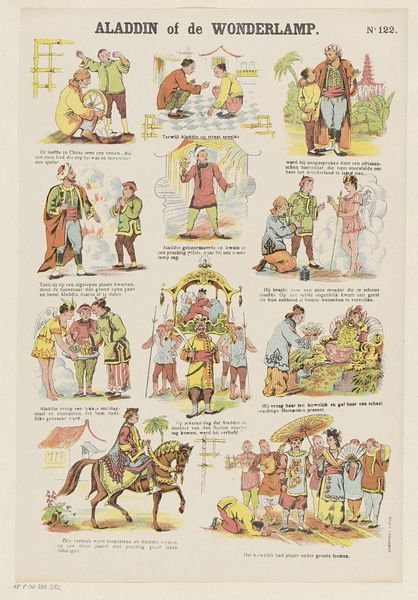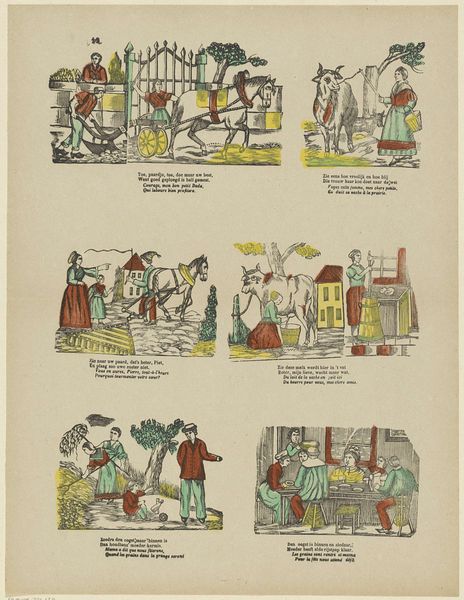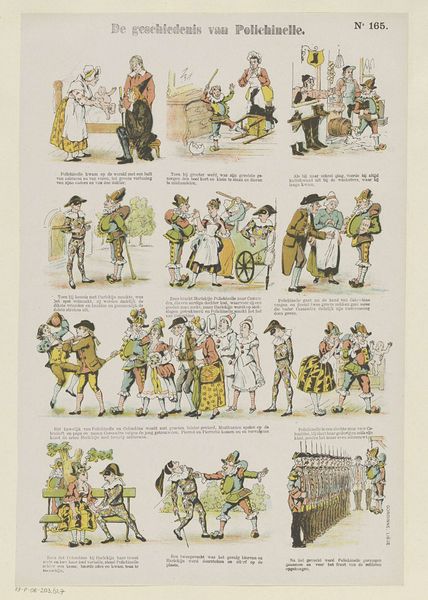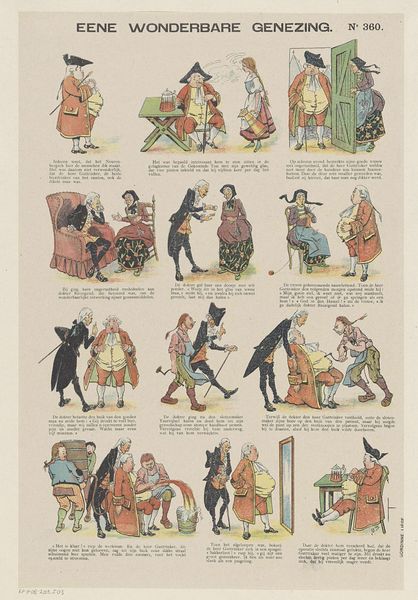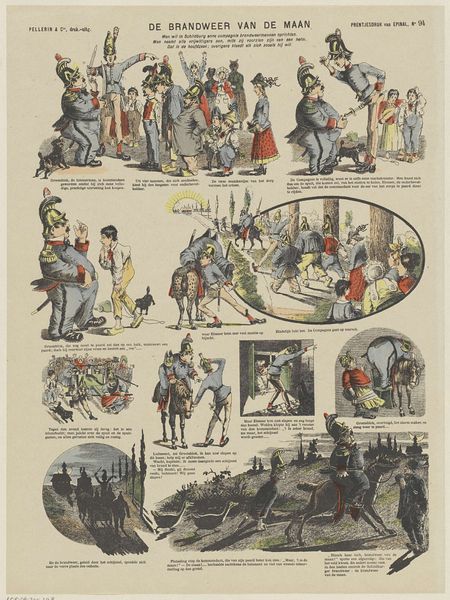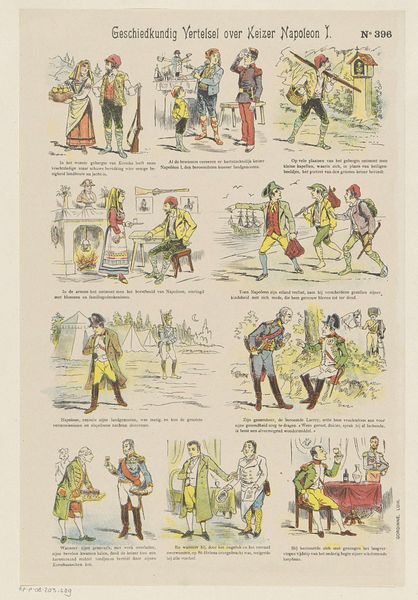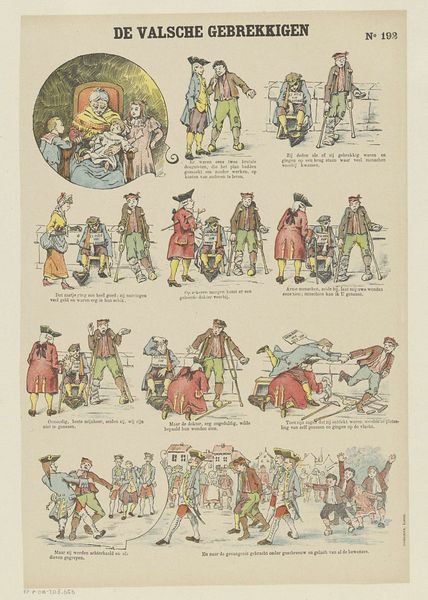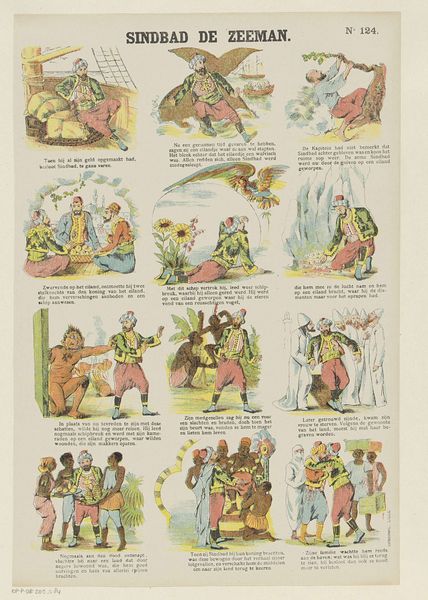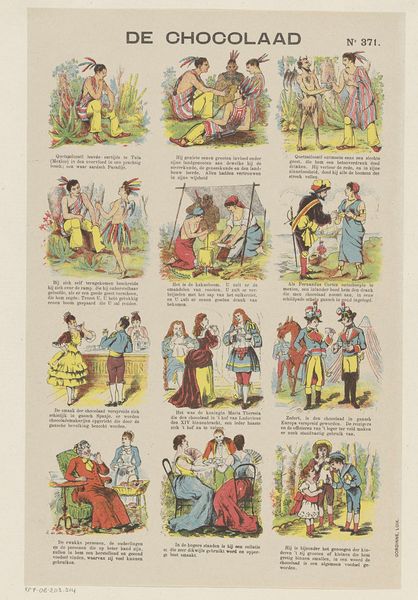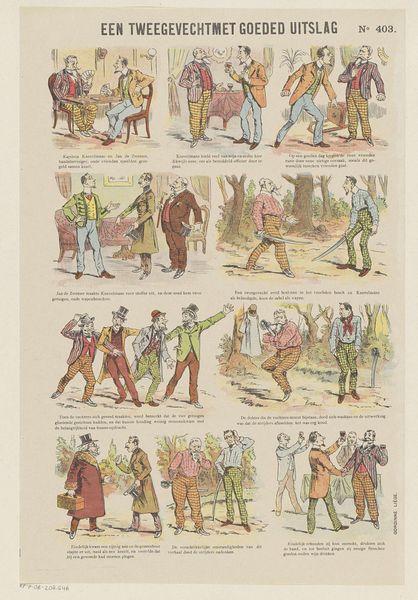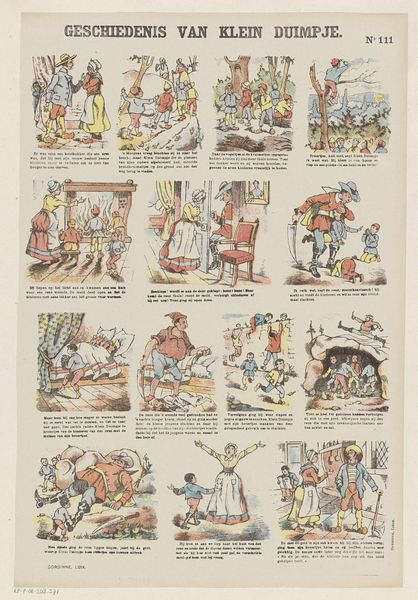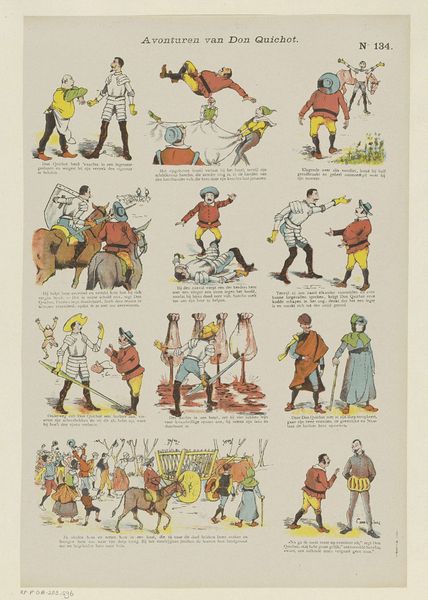
#
comic strip sketch
#
aged paper
#
sketch book
#
traditional media
#
personal sketchbook
#
sketchwork
#
sketchbook drawing
#
watercolour illustration
#
storyboard and sketchbook work
#
sketchbook art
Dimensions: height 397 mm, width 267 mm
Copyright: Rijks Museum: Open Domain
Curator: "Abou Hassan of één dag Kalief," created sometime between 1894 and 1959, presents a vibrant, almost kaleidoscopic narrative across a single sheet. The artwork resides here at the Rijksmuseum. What's your initial take? Editor: Well, first off, it feels like a storyboard, doesn't it? The use of line, the slightly faded quality of the watercolor, and the way each frame seems self-contained, yet contributes to the whole. Curator: Precisely. Knowing Gordinne’s historical context, we might interpret this as a satirical reflection on power dynamics. The tale of Abou Hassan, who is granted a day as Caliph, allows us to unpack themes of social mobility, albeit temporary, and the potential for abuse of power when marginalized figures are suddenly elevated. Editor: I'm drawn to how Gordinne uses color to differentiate characters and environments. See the dominance of yellows and greens—they give a lively, almost theatrical feel. And note the consistency in costuming. The repetitive nature encourages reading from left to right, top to bottom. It's guiding us, framing the story deliberately. Curator: That deliberate framing allows for a critical examination of Orientalist fantasies popular at the time. The story itself echoes "The Arabian Nights," inviting a comparative analysis. But, what sociopolitical messages are embedded within? What might it suggest about the societal perception of power? The visual elements, such as the costumes, can symbolize cultural appropriations. Editor: Symbolism through form is important here, wouldn't you say? The artist meticulously breaks down this narrative into segments with very basic shapes, relying on symmetry, rhythm and limited value contrasts in each to make the tale visually readable and consistent throughout the progression of panels. Curator: It goes even further when we consider how these images circulate, especially when removed from their cultural origins. There is always risk when images exoticize people who have been consistently disenfranchised. Is it subverting harmful ideas, or does it perhaps reinforce them? Editor: Fair point. Considering the limited palette, Gordinne achieves a rather impressive sense of depth and detail within each panel. But the question remains: is that formal control in service of clarity or containment? Curator: Ultimately, this sketch opens avenues for crucial discussions regarding historical representation. These visual narratives not only shape how society has, and continues to view particular cultures but, additionally, highlights the consequences of fleeting and misplaced power. Editor: Agreed. "Abou Hassan of één dag Kalief” isn't merely an aesthetic exercise, but a structured lesson on power.
Comments
No comments
Be the first to comment and join the conversation on the ultimate creative platform.

